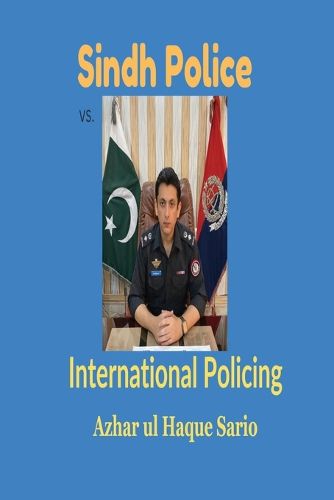Readings Newsletter
Become a Readings Member to make your shopping experience even easier.
Sign in or sign up for free!
You’re not far away from qualifying for FREE standard shipping within Australia
You’ve qualified for FREE standard shipping within Australia
The cart is loading…






This title is printed to order. This book may have been self-published. If so, we cannot guarantee the quality of the content. In the main most books will have gone through the editing process however some may not. We therefore suggest that you be aware of this before ordering this book. If in doubt check either the author or publisher’s details as we are unable to accept any returns unless they are faulty. Please contact us if you have any questions.
The book "Sindh Police vs. International Policing" by Azhar ul Haque Sario provides an extensive analysis and comparison of the Sindh Police system in Pakistan to other international policing systems. The book is divided into four parts consisting of several sections. In Part A, the author provides the historical background of the Sindh Police system from the British era to the present day. The author takes a closer look at the role of the police during British rule, their contribution to Pakistan's formation, and the Sindh Police's autonomy after independence.
Part B, C, D of the book focuses on the comparison of Sindh Police with the police systems of various international regions including Alaska, Maharashtra, New South Wales, Federal Territory Malaysia, Greater London, Ontario, The Central Federal District of Russia, and Western Province of Sri Lanka. The detailed analysis includes a discussion on the structure, governance, accountability, and operational procedures of each police system.
Part C of the book compares the training sessions of the Sindh Police with the Ankara Police Department, Maharashtra Police Department, Greater London Police Department, and the Federal District USA. The author highlights the strengths and weaknesses of each training session and suggests areas of improvement to the Sindh Police based on the best practices of other international police departments.
Lastly, Part D of the book compares Sindh Police with the top 5 strongest police forces in the world including the Scotland Yard Police, Canadian Police Force (RCMP), Royal Marechaussee, Police Force of France, and Japanese National Police based on various parameters such as accessibility, efficiency, quality of service, and public trust.
To sum up, the book is a comprehensive guide for anyone interested in understanding the Sindh Police system and its comparison with other international policing bodies. It provides detailed information supported by extensive research, making it a valuable resource for academics, policymakers, and law enforcement professionals.
$9.00 standard shipping within Australia
FREE standard shipping within Australia for orders over $100.00
Express & International shipping calculated at checkout
This title is printed to order. This book may have been self-published. If so, we cannot guarantee the quality of the content. In the main most books will have gone through the editing process however some may not. We therefore suggest that you be aware of this before ordering this book. If in doubt check either the author or publisher’s details as we are unable to accept any returns unless they are faulty. Please contact us if you have any questions.
The book "Sindh Police vs. International Policing" by Azhar ul Haque Sario provides an extensive analysis and comparison of the Sindh Police system in Pakistan to other international policing systems. The book is divided into four parts consisting of several sections. In Part A, the author provides the historical background of the Sindh Police system from the British era to the present day. The author takes a closer look at the role of the police during British rule, their contribution to Pakistan's formation, and the Sindh Police's autonomy after independence.
Part B, C, D of the book focuses on the comparison of Sindh Police with the police systems of various international regions including Alaska, Maharashtra, New South Wales, Federal Territory Malaysia, Greater London, Ontario, The Central Federal District of Russia, and Western Province of Sri Lanka. The detailed analysis includes a discussion on the structure, governance, accountability, and operational procedures of each police system.
Part C of the book compares the training sessions of the Sindh Police with the Ankara Police Department, Maharashtra Police Department, Greater London Police Department, and the Federal District USA. The author highlights the strengths and weaknesses of each training session and suggests areas of improvement to the Sindh Police based on the best practices of other international police departments.
Lastly, Part D of the book compares Sindh Police with the top 5 strongest police forces in the world including the Scotland Yard Police, Canadian Police Force (RCMP), Royal Marechaussee, Police Force of France, and Japanese National Police based on various parameters such as accessibility, efficiency, quality of service, and public trust.
To sum up, the book is a comprehensive guide for anyone interested in understanding the Sindh Police system and its comparison with other international policing bodies. It provides detailed information supported by extensive research, making it a valuable resource for academics, policymakers, and law enforcement professionals.